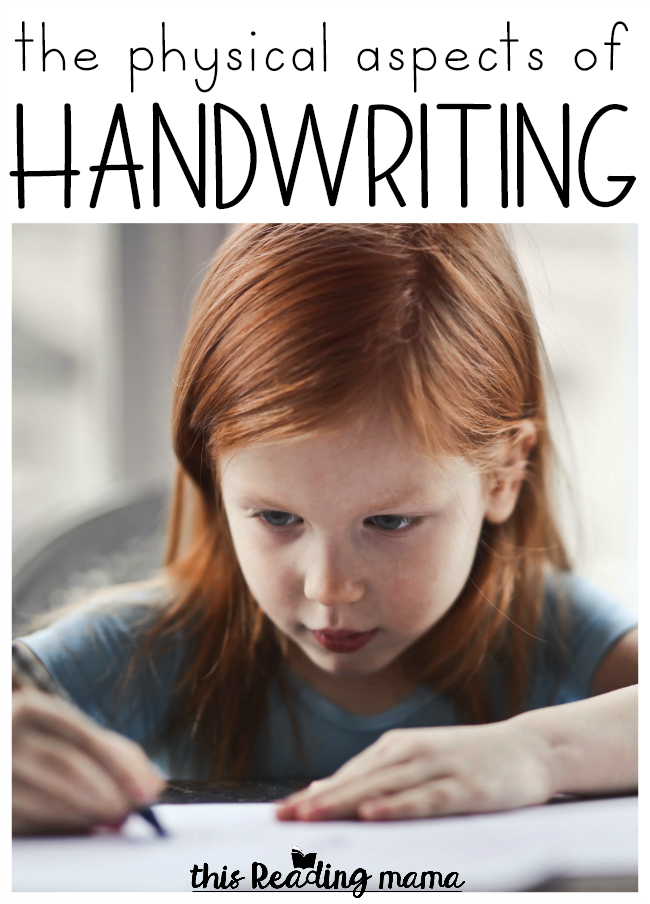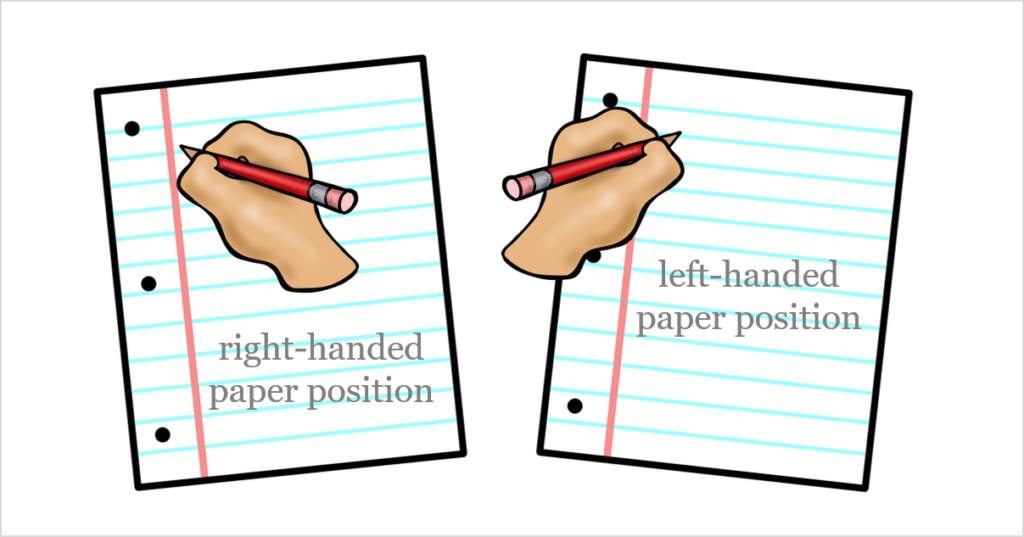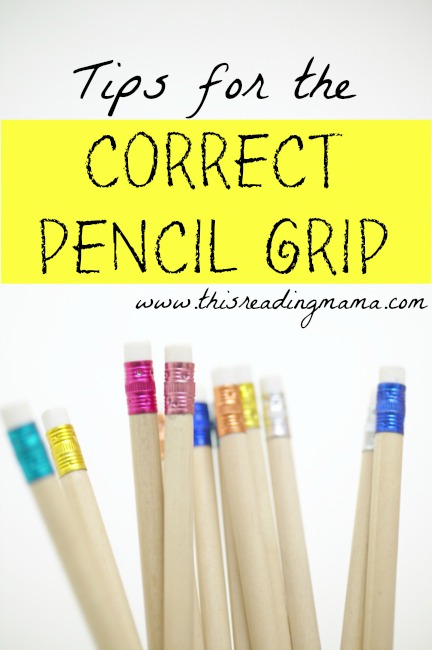When you think of handwriting, you might think first about letter formation. And you would be right. But before we even arrive at letter formation, there are some physical aspects of handwriting that we need to think about. These can positively and negatively affect handwriting.
In this post, we’ll mainly be talking about posture and pencil grip…and what you can do to support your writers in the classroom and at home.
Find all our handwriting freebies here.

The Physical Aspects of Handwriting
Handwriting is important. Even in the world of technology, we still often communicate with others by writing. If our handwriting is sloppy and illegible, the reader struggles to get the message we’re trying to send.
It can be tempting to focus mainly on letter formation {and I have plenty of handwriting printables to help you do just this}, but there may also be underlying physical issues that keep our learners from writing legibly. I highly recommend finding an occupational therapist {O.T.} if you suspect that your learner is struggling physically with writing.
There are also some things you can do and try in the classroom and at home to help your writers. Let’s talk about five.
*I am a participant in the Amazon Services LLC Associates Program, an affiliate advertising program designed to provide a means for me to earn fees by linking to Amazon.com and affiliated sites.
1. Hand Dominance
As learners begin writing, we want to be sure they have a dominant hand. Switching back and forth between hands too often can confuse the brain to body connection and make it harder to establish patterns that help make handwriting easier. {According to the research from Handwriting Brain-Body Disconnect by Dotterer.}
If you have a child who needs help establishing hand dominance, try different fine motor activities like putting pegs in a pegboard. First, ask the learner to stack the pegs in using one hand and then again with the other. Time them to see which side was faster or easier for them. You might ask them to draw a house or a person with one hand and then the other. Which person or house is clearer?
Once hand dominance has been established, you can place a sticker on that particular side of their desk or work area to remind them that’s the hand they need to write with. It might be as simple as saying, “You write with the hand that closest to the window.”
2. Pencil Grip
We want our learners to use a tripod grip. This means they are using their thumb, pointer finger, and middle finger to support the pencil. If you have a learner or two struggling with the tripod grip, I have some tips from an O.T. friend of mine in my blog post, Tips for Teaching Correct Pencil Grip.
You can also buy pencil grips like these soft, Stetro grips. I do not recommend grips that are made of hard plastic. I like that these are soft and have grooves right where the fingers should go.
With pencil grip, you also need to think about hand strength. Those little hand and finger muscles need conditioning to hold the pencil and apply the right amount of pressure on the paper. Hand strengthening exercises like using clothes pins, tweezers, or playing with clay {playdough is good, but softer} are great ways strengthen the hand muscles.
I have several fine motor freebies on my blog that can help. There are even toys that can help build fine motor muscles.
3. Paper Position
Paper position has a lot to do with handwriting, especially as it relates to right-handed and left-handed learners. Right-handed learners need to tilt the top left corner down whereas left-handed learners need to tilt the top right corner down. This makes handwriting more comfortable for the wrist and hand. {See the image below.}

4. Letter Strokes when Writing Letters with Horizontal Lines
{Yes, letter formation made it into this post. For good reason…}
Did you know that left-handed learners shouldn’t use all the same letter strokes as right-handed learners? It’s true! I actually didn’t notice this until I married my husband, who is left-handed. My best friend also happens to be left-handed.
For example, a left-handed learner should learn to drag the horizontal line in an uppercase A from right to left instead of left to right like a right-handed write does. This prevents them from pushing the pencil on the paper. I’ve had lots of positive feedback about my Left-Handed Handwriting Pack. You can also find the left-handed handwriting freebies here.
5. Posture
Poor posture negatively affects the back, shoulder, arm, and wrist muscles. These are all needed for good handwriting and writing stamina. If you suspect posture could be an issue, make sure the table and chair are the right height. It may help to put books under your learner’s feet if they can’t reach the floor.
Writing in different positions can also be helpful. For example, try using a slant board. Slant boards can help writers improve posture, paper stability, handwriting stamina, and more. They’re pretty cool if you ask me!
Helping our learners with the physical aspects of handwriting can help improve both their letter formation and motivation to write. Both are extremely important!
Enjoy teaching!
~Becky




I’d also add core strength and being able to separate the two halves of your hands. Think about yourself trying to thread a needle, now thread it standing up, now thread a needle while standing on one foot. It’s much easier when you have better stability and your energy isn’t going to keeping you upright. When kids have weaker core muscles, it takes more energy to sit in a chair in a good position for writing. Kids with weaker core muscles also tend to w-sit to help stabilize their bodies. As babies, tummy time helps with this strength. For older kids, spending time laying on their tummy can also be good; doing a puzzle, coloring, or even watching tv while laying down can work on core strength a bit. Staying active at recess and the park are great. Monkey bars really help with this strength.
To help with pencil grip, being able to control the ring and pinky finger side separately from the pointer and middle finger side. You see this using scissors or tongs. It helps for kids to be able to know the names of their fingers (thumb, pointer, middle, ring, pinky) and be able to move them individually and touch each one with the thumb of the same hand. Think of finger plays like “Where is Thumbkin” and songs with hand and finger motions; even fingerspelling the ABCs with sign language. Fine motor tasks such as lacing and pop beads also help with pencil grip, especially trying to just use thumb and pointer to hold the beads and laces.
Yes! Thank you for all your awesome suggestions!